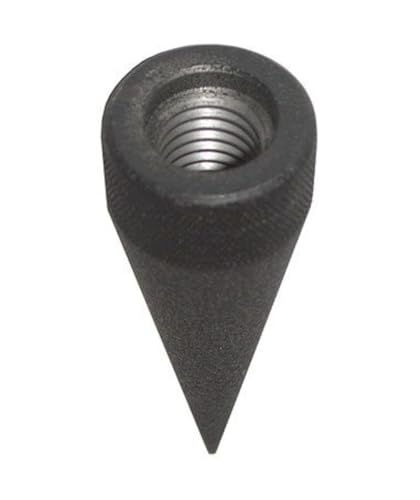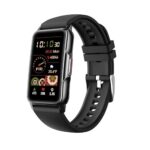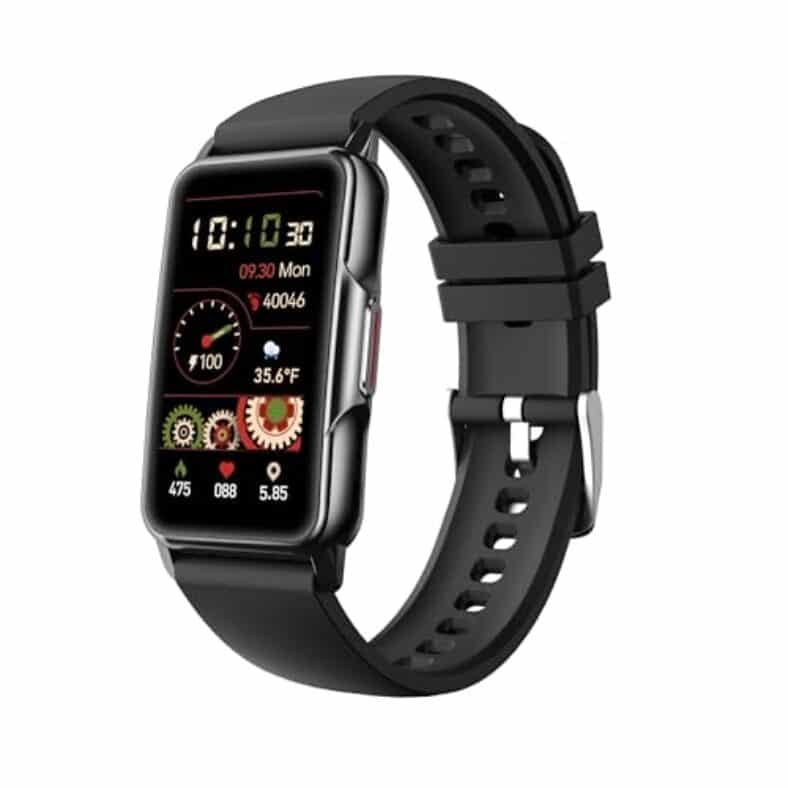Seamless Wireless Wearable and Implantable Sensors
Understanding EMG Technology and Smart Wearables
Electromyography (EMG) technology is revolutionizing the way we understand muscle activity and movement, particularly through the development of smart wearables. These innovative devices not only provide insight into our physical performance but also enhance training regimens and aid in rehabilitation.
What is EMG Technology?
EMG technology involves the recording of electrical activity produced by skeletal muscles. When a muscle contracts, it generates electrical impulses that can be measured via electrodes placed on the skin’s surface. These signals can reveal valuable information about muscle function, allowing users to comprehend their physical capabilities and inefficiencies.
How EMG Sensors Work
- Signal Detection: EMG sensors detect electrical signals generated by muscle contractions through surface electrodes.
- Signal Processing: The detected signals are amplified and digitized, converting them into a format that can be understood and analyzed.
- Data Analysis: The processed data is interpreted to assess muscle performance, fatigue levels, and movement patterns.
Applications of EMG in Smart Wearables
Smart wearables incorporating EMG technology offer various applications, including:
Practical Examples of EMG Wearables
Several brands have integrated EMG technology into their smart wearables, offering users a range of functionalities. Here are a few notable examples:
Benefits of EMG Technology in Smart Wearables
Integrating EMG technology into smart wearables offers several benefits:
Important Considerations
When selecting an EMG wearable, keep in mind the following factors:
| Feature | Myontec Mbody | Delsys Trigno | Athos Smart Apparel |
|---|---|---|---|
| Purpose | Sports monitoring | Research & clinical use | General fitness monitoring |
| Real-time Feedback | Yes | Yes | Yes |
| Wearability | Shorts | Sensor pads | Apparel (shirts, shorts) |
| User-Friendly App | Yes | Yes | Yes |
| Data Analysis Features | Muscle activity tracking | Advanced metrics | Muscle engagement metrics |


Improved Performance Through Real-Time Feedback
The landscape of fitness technology has transformed dramatically, especially with the advent of Electromyography (EMG) integrated smart wearables. These devices offer athletes and fitness enthusiasts immediate insights into muscle activation patterns and proper exercise form execution. Real-time feedback can be a game changer in optimizing workout routines, enhancing athletic performance, and ensuring that users maintain proper body mechanics during exercises. Let’s delve deeper into how these smart wearables can elevate your training experience.
Understanding EMG Technology
Electromyography (EMG) measures muscle electrical activity, providing insights into how muscles respond to different exercises. Wearable EMG devices, such as the Athos Gear and Sleek EMG, are increasingly available, facilitating real-time monitoring of muscle activation. When equipped with such technology, athletes can adjust their form and effort levels during workouts to achieve optimal results.
Key Features of EMG-Integrated Wearables:
Benefits of Real-Time Data
Real-time data collected from EMG smart wearables can significantly influence workout efficiency. Here’s how:
Optimization of Workout Routines
With immediate feedback on muscle activation, you can determine which exercises are most effective for your fitness goals. For instance, if you’re using the Athos Training System, it can guide you in adjusting your workout intensity and volume based on muscle fatigue levels. This ensures that you’re not just going through the motions but actively engaging the right muscles for desired outcomes.
Enhancing Athletic Performance
Athletes often require detailed feedback to fine-tune their performance. For example, the Myotest Wearable Unit provides real-time assessments of strength, power, and speed, allowing athletes to make immediate adjustments. This capability helps athletes:
Ensuring Proper Form During Exercises
Maintaining proper form is crucial to reducing the risk of injuries. Smart wearables with EMG capabilities provide actionable insights to correct form while exercising. For example, the Form2Lift Smart Bra not only tracks muscle activity but also provides feedback on posture and alignment during strength training exercises. Users can receive alerts if they are engaging muscle groups incorrectly or excessively.
Advantages of Having Real-Time Form Feedback:
Practical Applications and Examples
Here are a few specific products and their practical uses in the realm of real-time feedback during workouts:
| Product | Brand | Primary Features | Use Case |
|---|---|---|---|
| Athos Gear | Athos | Muscle activation tracking, heart rate monitoring | Ideal for strength training and muscle conditioning |
| Myotest Wearable Unit | Myotest | Real-time strength and power analysis | Commonly used by athletes involved in dynamic sports |
| Form2Lift Smart Bra | Form2Lift | Posture tracking and muscle engagement feedback | Used by women to enhance form in various workouts |
These products exemplify how embracing EMG technology can elevate your approach to fitness, offering a level of insight previously available only to top-level athletes and trainers. By utilizing real-time feedback from these advanced wearables, you are not just committing to better workouts; you are actively engaging in a smarter, data-driven training regimen that maximizes your potential.
Ready to take your performance to the next level? Investing in EMG integrated smart wearables might just be what you need to achieve your fitness aspirations. Whether you are a competitive athlete or a casual gym-goer, the benefits of real-time muscle feedback can significantly transform your workout experience.



Injury Prevention and Rehabilitation
As technology advances, the fitness industry continues to experience a transformation, particularly in the realm of injury prevention and rehabilitation. One of the most exciting developments is the emergence of smart wearables designed specifically to monitor movement patterns and muscle balance. These devices not only help athletes and fitness enthusiasts track their performance but also play a vital role in enhancing safety and recovery strategies.
Identifying Improper Movements
One of the primary benefits of smart wearables is their ability to detect improper movements that could lead to injuries. Many athletes may not realize they are executing exercises incorrectly, which can strain muscles and joints over time. Wearable technology can analyze movement in real time, providing instant feedback to help users make adjustments.
Practical Examples
Addressing Muscle Imbalances
Muscular imbalances occur when certain muscles are stronger or weaker than their counterparts, contributing to faulty movement patterns and increased injury risk. Smart wearables can help identify these discrepancies, enabling users to focus on specific areas that require strengthening or flexibility work.
Key Features to Look For
Enhancing Rehabilitation Efforts
Rehabilitation after an injury can be a slow and challenging process. Smart wearables can facilitate recovery by ensuring individuals perform rehabilitation exercises correctly and engage the appropriate muscles effectively.
Benefits of Using Wearables in Rehabilitation
Example Rehabilitation Programs
Summary of Key Features and Benefits
| Device | Key Features | Benefits |
|---|---|---|
| Whoop Strap 3.0 | Heart rate variability, strain monitoring | Injury prevention through overexertion alerts |
| Lumo Lift | Posture correction | Prevention of musculoskeletal injuries |
| Athos Training System | EMG muscle activation insights | Targeted strengthening based on individual needs |
| Kerstin Sleeveless Shirt | Integrated muscle sensors | Identifies muscle imbalances for corrective action |
| Fitbit Charge 5 | Guided workouts with feedback | Ensures correct execution during rehabilitation |
| Oura Ring | Sleep tracking, recovery monitoring | Customizes rehab recovery based on individual readiness |
| PT Pal | Virtual physical therapy platform | Remote monitoring and tailored rehab programs |
| Samsung Galaxy Watch | Personal coaching for strength recovery sessions | Improves muscular engagement and form during rehab |
Incorporating smart wearables into your fitness routine can significantly reduce the risk of injury and enhance recovery strategies. Whether you’re a seasoned athlete or new to exercise, leveraging these technologies can support your goals and safeguard your physical health.
Embracing Technology for Enhanced Performance and Injury Prevention
In conclusion, the use of EMG integrated smart wearables for form correction presents numerous advantages, including enhanced performance, injury prevention, and support during rehabilitation. These innovative devices provide real-time feedback, allowing users to fine-tune their movements for greater efficiency and safety. Readers are encouraged to consider incorporating EMG smart wearables into their fitness or rehabilitation routines to unlock their full potential and achieve optimal results.



Leave a Reply